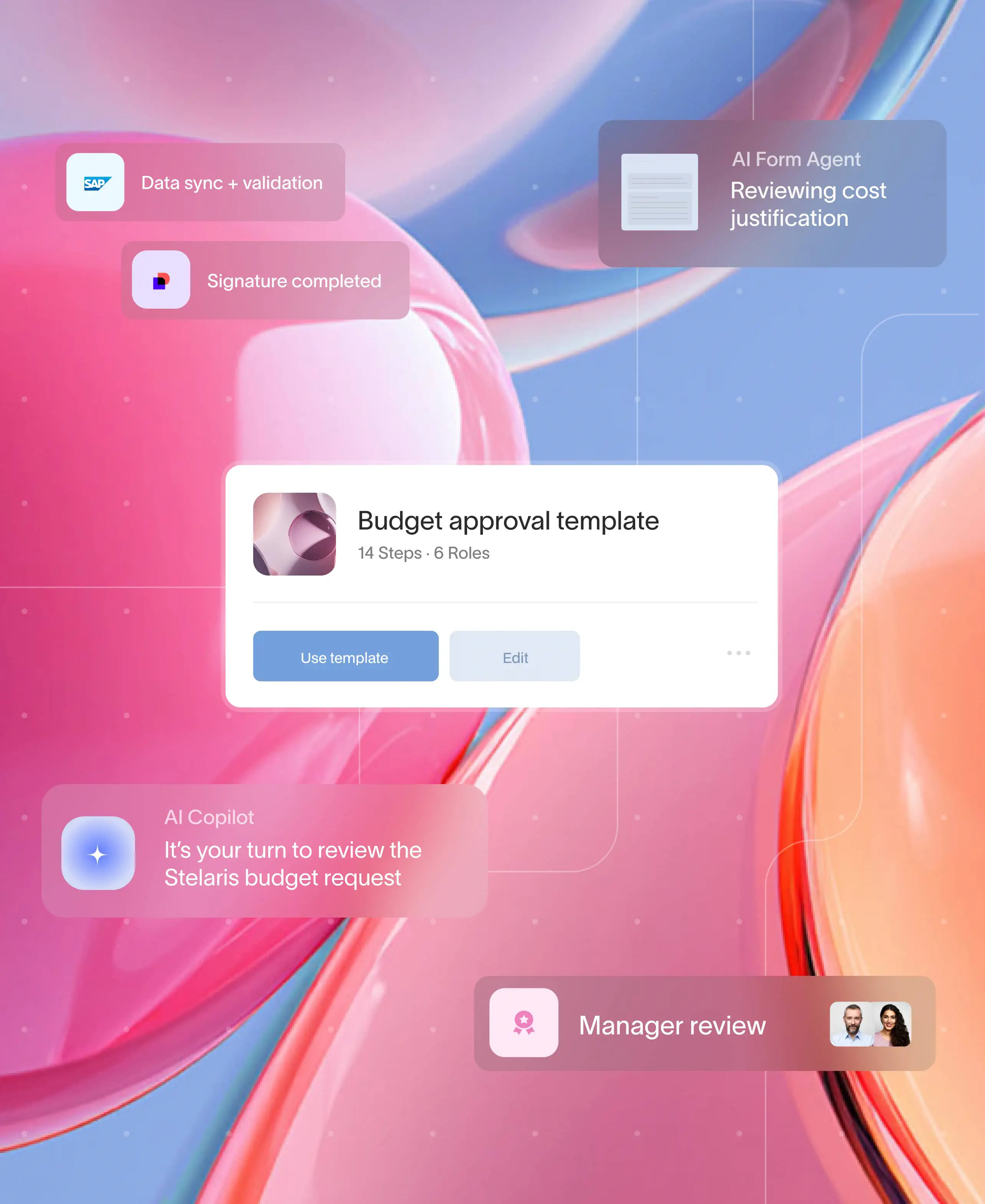
At a glance
Client portals are now a must have, replacing email sprawl with a single, secure hub for messages, files, tasks, e-signatures, and real-time status while delivering ROI by cutting service workloads up to 63% and deflecting as much as 40% of support inquiries. The guide shows how to run a focused pilot, define goals and metrics, train users, and iterate on feedback. Learn why an all in one client space, with plug and play integrations, bank grade security, and white label apps is the key to client satisfaction.
Introduction: Why your clients need more than email

If your team still chases signatures, forwards attachments or answers endless “did you get my email?” calls, it’s time for a change. Clients now expect the convenience of consumer apps - logging in, uploading documents and checking status in real time. This isn’t a fad: 82 % of IT organisations offer a self‑service portal, and diverting interactions to these channels saved a composite firm over US$9.2 million. Operating without a portal means scattered communications, manual follow‑ups and frustrated clients. This guide shows you how to go from a small pilot programme to a company‑wide rollout while leveraging modern platforms like Moxo’s OneStop Client Hub.
Plan your pilot programme
Pilots act as an insurance policy for technology adoption. Instead of rolling out a portal to everyone at once, you test it with a small group, fix issues early and build champions. Unisys notes that pilots validate systems in real‑world conditions and capture feedback to update support materials. Follow these key steps:
- Define goals and metrics – Decide what success looks like: faster onboarding, fewer support tickets or higher satisfaction. Document baseline data like emails per project and approval times so you can measure improvement.
- Choose the right platform and map integrations – Select a portal that unifies messaging, invoicing and tasks and connects to your CRM or payment gateway. Integration is often the biggest hurdle, so verify API and security support.
- Limit scope and pick participants – Start with a department or a handful of clients, focusing on one workflow like onboarding. Avoid oversizing the pilot, set clear timelines and communicate expectations early.
- Prepare change management – Technology alone doesn’t drive adoption. Train employees and clients, test your communication plan and refine onboarding materials to overcome resistance.
- Collect feedback and iterate – Throughout the pilot, gather qualitative and quantitative feedback. Use these insights to refine processes and decide whether additional pilot phases are necessary.
Evaluate and refine your pilot
At the end of your pilot, hold a retrospective. Compare results against your baseline and decide whether another pilot phase is warranted. If major capabilities aren’t ready within a few months, Unisys recommends a phased pilot that bundles completed features. Confirm that encryption and access controls meet your compliance requirements. Move forward only when the portal delivers clear value and users are ready.
Roll out the portal company‑wide
Once the pilot proves its value, it’s time to scale. A successful rollout maximises business value while minimising risk. To accomplish this:
- Segment your rollout – Roll out by region, entity size or complexity. Group smaller units together and phase larger divisions by capability. Region‑by‑region launches encourage early buy‑in and let you make local adjustments.
- Communicate and support – Share pilot successes, tailor messages to executives and staff and provide training guides. Offer “hypercare” support for early adopters with live chat, knowledge base articles and feedback channels. Targeted communication fosters adoption.
- Measure, refine and scale – Keep tracking your pilot metrics as you expand. Adjust processes and integrations, and share progress with leadership to secure ongoing investment.
Why invest in a client portal
Client portals are cloud‑based platforms hosted on a subdomain like “clients.yourdomain.com”, giving clients a branded space to collaborate with you. They allow customers to log in securely, exchange files, manage subscriptions and track projects from a user‑friendly dashboard. The benefits fall into four categories.
A client portal is no longer a good to have, it is a must have: clients now expect secure self-service, real-time status, and a branded space to collaborate, and competitors already provide it.Operating without a portal drives higher support load, slower onboarding, and compliance risk; adopting one meets expectations, protects revenue, and strengthens retention.
Centralised collaboration, efficiency and compliance
A client portal consolidates messaging, invoices, tasks and documents in one place, creating a single source of truth and eliminating the need to hunt through email threads. Automation handles intake forms, reminders and approvals, reducing service workloads by 63 % and deflecting costly support inquiries. Clients appreciate the control. 86 % of buyers pay more for a great experience, and nearly 49 % return when their portal experience feels personalised. Portals also address compliance: SSL encryption, role‑based access control and audit trails safeguard sensitive data and simplify regulatory reporting.
Hidden costs of standing still
Delaying portal adoption has its own price tag. When communications are scattered across email, chat and file‑sharing apps, teams spend hours searching for the latest version of a document. Sensitive information sent via email or consumer tools risks exposure and may violate industry regulations. Without a single source of truth, reporting becomes manual and error‑prone, making audits stressful and time‑consuming. Clients notice the inefficiency and may choose competitors who offer a smoother digital experience. In a competitive market, standing still is a risk you can’t afford.
ROI and market trends
The numbers behind client portals are compelling. Demand is rising – 95 % of businesses report a surge in self‑service requests and 78 % of users prefer mobile access. Efficiency gains are significant – portals reduce service workloads by 63 % and deflect up to 40 % of support inquiries. Customer expectations are high – 86 % of buyers will pay more for a great experience. Despite this, adoption lags: though 82 % of organisations offer portals, only 23 % achieve broad usage. The market itself is growing rapidly, from USD 1.81 billion in 2024 to USD 3.38 billion by 203.
Beyond numbers, portals unlock intangible benefits. A unified workspace improves transparency and builds trust between clients and your team. Clients feel more valued when they can monitor progress and contribute on their terms, which deepens relationships. For your employees, a central hub eliminates context switching and fosters collaboration across departments. With the right portal, your brand appears modern and customer retention is easier to achieve.
Beyond statistics, real‑world case studies show the transformative power of portals. The following highlights are drawn from organisations using Moxo’s OneStop client hub.
Success stories across industries
Financial services – Global banks cut onboarding times by 50 % and shifted most transaction approvals to digital workflows. BNP Paribas’s MyWealth app unified messaging, document exchange and digital signatures, creating a single audit trail. Standard Chartered shifted more than 65 % of approvals online, improving response times and client satisfaction.
Consulting and professional services – Falconi Consulting digitised multi‑stakeholder approvals and secure file sharing during the pandemic, reducing project turnaround times by 40 % and accelerating due diligence from weeks to days.
Real estate and property – Even small shops benefit. Salty Air Living centralised client interactions, scaling from paperwork overload to five times more deals. Balfour Homes saw sales soar 2,000% within two months after digitising documents and approvals.
How Moxo supports your implementation plan
A workflow engine, not just a portal
Moxo goes beyond file-sharing and messaging: it orchestrates end-to-end, human-driven workflows. A no-code visual builder lets you map every step of an onboarding, approval, or servicing process and then automate reminders, escalations, and hand-offs so the right stakeholder always acts at the right moment.
- End-to-end workflows – drag-and-drop builder automates onboarding, approvals, and reminders so processes run themselves.
- All-in-one client space – chat, video, e-sign, file sharing, and forms live inside one branded portal.
- Plug-and-play integrations – REST APIs, webhooks, and ready connectors sync data with your CRM, ERP, and storage—no rip-and-replace.
- Bank-grade security – encrypted sessions, audit trails, and role-based access keep regulators happy.
- White-label & mobile-first – your logo, your colors, responsive web plus native apps, live in days.
Conclusion
A well‑executed pilot lets you validate technology and refine training. Address integration and security concerns early, choose a flexible platform like Moxo and invest in change management to drive adoption. The payoff is clear: portals reduce workloads, improve client satisfaction and deliver tangible ROI.
Ready to see how a client portal can transform your business? Book a demo to learn more. With Moxo, you can pilot quickly, refine your workflows and scale across your organisation, giving clients the seamless experience they expect.
FAQs
What is the typical timeline for implementing a client portal?
Most organisations can launch a pilot within 4–8 weeks depending on integration complexity. During this period you define objectives, configure workflows and train users. After a successful pilot, company‑wide rollouts typically take another 3–6 months. Segmenting the rollout by entity size or region helps manage risk and maintain momentum.
Should we build a client portal internally or buy one?
Building a portal offers customisation but demands significant development resources, ongoing maintenance and security expertise. Buying a platform like Moxo provides out‑of‑the‑box workflows, compliance, integrations and support. It allows you to pilot quickly and scale without reinventing the wheel. Many companies that start building eventually migrate to specialised platforms due to hidden costs.
How do we measure the ROI of a client portal?
Track metrics such as reduction in service workload, time‑to‑onboarding, number of manual follow‑ups and client satisfaction scores. Benchmarks show that portals can deflect up to 40 % of support inquiries, reduce service workload by 63 % and encourage repeat business with personalised experiences. Factor in cost savings from eliminating manual processes and the revenue boost from happier clients.
How do we encourage clients and employees to actually use the new portal?
Adoption depends on a strong change management plan, not just the technology itself. Start by clearly communicating the benefits and sharing successes from your pilot program. Provide comprehensive training with guides, tutorials, and dedicated "hypercare" support like live chat during the initial rollout. To drive usage, make the portal the official channel for essential workflows like onboarding or document approvals, and ensure you have champions within the company promoting its value.
What specific security features are most important in a client portal?
To protect sensitive information and meet compliance standards, several security features are crucial. Look for a platform with end-to-end encryption (like SSL) to protect data both in transit and at rest. Role-based access controls are essential to ensure users can only see information relevant to their permissions. Finally, a comprehensive audit trail that logs all user activity is vital for security monitoring and regulatory reporting.





